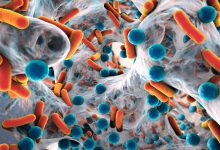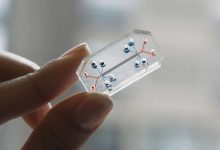
Scientists have discovered that the dye methylene blue kills malarial parasites at an exceptional rate
Malaria the most prevalent and most pernicious parasitic disease of humans is an infectious disease caused by infected female Anopheles mosquito which transmits the parasitic protozoans called Plasmodium causing a symptom like fever, tiredness, vomiting, and headaches.
It causes about 430000 deaths every year. Prevention from Malaria is focused mainly on the use of mosquito nets, insecticides and medicine and, as a result, the number of deaths due to malaria has almost halved in the last ten years. Resistance against antimalarial drugs has emerged to all classes of except the artemisinins.
A new study led by Radboud university medical center scientists and international colleagues discovered that the dye methylene blue kills malarial parasites at an exceptional rate and can be used as an is an antimalarial which is also safe. This study was published in the journal, The Lancet Infectious Diseases.
With time, as the drug resistance in the microorganism is increasing, malaria parasites are also becoming increasingly resistant to the artemisinin-based combination therapies that are currently used for the treatment of malaria. Other drawbacks of this currently used therapy is that these medicines do not have severe effect on parasite as it doesn’t do much to stop the spread of malaria because the parasites remain in the blood for a long time due to which, there is a chance that other mosquitos can get infected if they feed on the patient.
After treatment of malaria, gametocytes can stay in a person’s body for several weeks. During their research, researchers added methylene blue with artemisinin-based combination therapy and observed that after adding dye to the antimalaria medicine, patients were no longer infecting the other mosquitos which can stop the transmission of malaria. The surprising thing is the effect of this new therapy can be seen within 48 hrs i.e in two days. Patients who were given only artemisinin-based combination therapies were able to infect other mosquitos for at least a week.
Researcher Teun Bousema (Radboudumc) coordinated the study which was conducted together with the University of California (UCSF) and the Malaria Research and Training Center (MRTC). Bousema: “We noted that the male parasites disappeared from the bloodstream more quickly than the female parasites.”
This was the first time that the effect of methylene blue was examined on the spread of malaria amongst humans. According to author Bousema, “Methylene blue is very promising because it can prevent the spread of malaria within such a short time following treatment. There are also indications that methylene blue also works well in species that are resistant to certain medicines.” The dye is safe and was tolerated well by patients. There is however just one awkward side effect: “I have used it myself, and it turns your urine bright blue. This is something that we need to solve because it could stop people from using it.”






